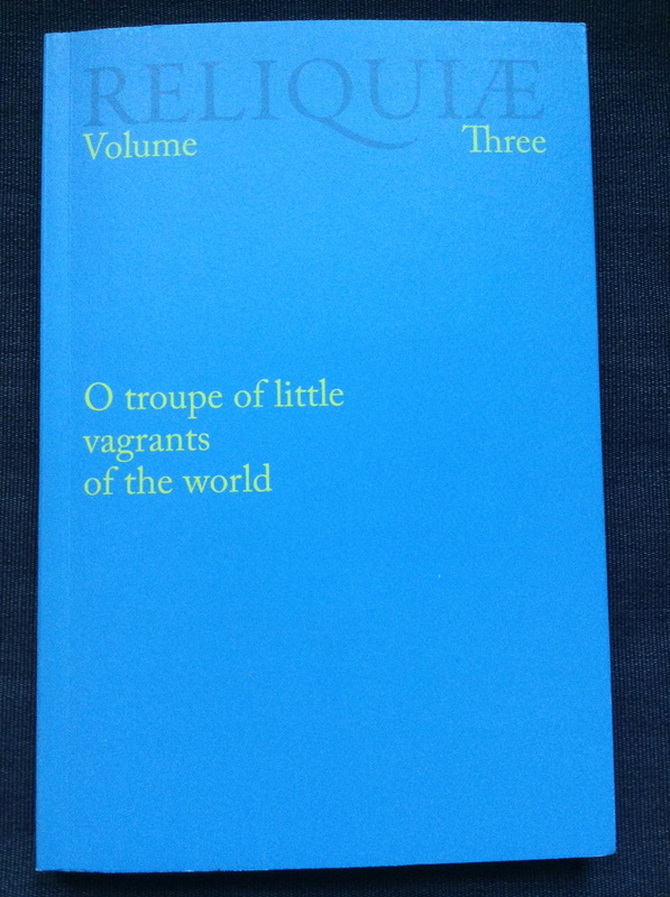Reliquiæ is another of their many productions, an annual journal that acts as a kind of calling card for what they do, an ambassadorial publication that carries in it the essence of everything Corbel Stone Press stands for. Volume Three of Reliquiæ appeared in November 2015 and is arguably the press’ most wide-ranging and impressive collection so far of poetry, short fiction, non-fiction, translation and visual art.
In amongst the contents of Volume Three, there are five bardos (a bardo is a Tibetan word for a text recited for a person after their death and before their next birth) for vascular and non-vascular plants, beetles, butterflies and the species of insects that includes wasps and bees. There are six ‘scraps’ of folktales from the Aino people, an ethnic minority in Japan who live primarily on the northernmost Japanese island of Hokkaidō. There are also fragments of Old Norse, five ‘cantations’ for endangered species and a fascinating piece on the mapping of place names in the Cairngorms.
As its title suggests, Reliquiæ is also a vessel for much older texts and artwork. The writings of Gerard Manley Hopkins, WB Yeats and Edward Thomas, for example, all feature regularly and Volume Three includes three pieces by WB Yeats—“Evocation”, “The Heart of Spring” and “The Song of Wandering Ængus”.
Each volume of Reliquiæ has as its centrepiece an essay as a form of investigation into nature. In Volume One, it was a fascinating piece by Noor de Winter entitled “Landscape as the Origin of Music”; in Volume Two is was an equally compelling piece by Don Domanski entitled “Poetry and the Sacred”. In Volume Three, it is Tim Lilburn’s exquisite essay “How to Be Here”, which begins with the sight of two deer approaching Lilburn’s house at dusk to feed (‘Shadow soaks into them’) and uses that as a starting point for a long treatise on contemplation and what it means to enter the ‘wilderness of discrete things’.
But perhaps my favourite piece in Volume Three is a selection of short texts entitled Stray Birds by Rabindranath Tagore. These gnomic pieces are closest to haiku, each a prayer or a koan, which, like Wallace Stevens’ “Thirteen Ways of Looking at a Blackbird”, try to trace the secret harmonies of the universe. A sample text: 'The bird-song is the echo of the morning light back from the earth.'
Corbel Stone Press are unlike any other press I’ve ever come across and their rare and ravishing work needs to be championed and celebrated. Do check them and their work out--Volume Three of Reliquiæ wouldn’t be a bad place to start.

